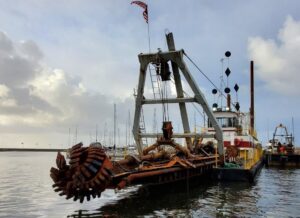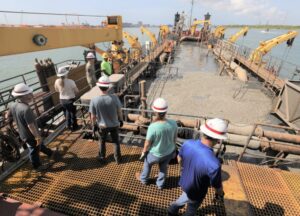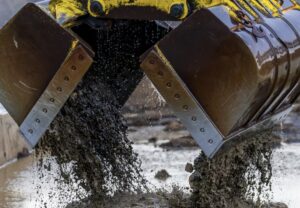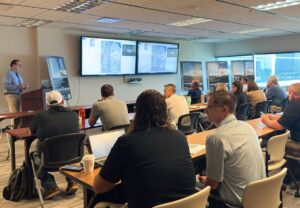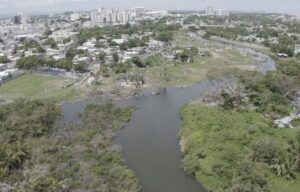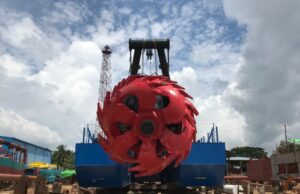USACE: Spotlight on David B. Boothby Jr.
Dredging the Texas coast to keep navigation channels open for commerce and recreation often goes unnoticed, with many citizens not aware this vital process is taking place out in the Gulf of Mexico on a recurring basis.
For David B. Boothby Jr., leaving a successful 31-year career in the private sector for a new position with the U.S. Army Corps of Engineers Galveston District was a decision he didn’t take lightly, understanding his expertise in civil engineering would be applied to an organization dedicated to maintaining more than 1,000 miles of channel, including 250 miles of deep draft and 750 miles of shallow draft.
“The Corps is continuously dredging to maintain safe and efficient navigation in channels up and down the Texas Coast,” said Boothby. “Along with the dredging requirement, there is a need for locations –literally requiring thousands of acres of land – to place dredged material removed from the channels. This is an enormous recurring task requiring hundreds of people from the Corps and its partners to execute.”
This is where Boothby’s geotechnical expertise in civil engineering comes in handy.
“I provide geotechnical analysis and design support to project delivery teams for planning studies, design projects and general investigations as well as to the operations and construction branches for navigation, flood risk management and ecosystem restoration projects,” said Boothby. “Geotechnical engineering modeling and analysis essentially provides insight into the physical properties of soils and the application of those properties in engineering solutions for structures which depend on their foundations in soils for stability.”
For navigation projects, this analysis might include the stability of cut for channel side slopes or dredged material confined placement area containment dike design.
Boothby currently works on Dredged Material Management Plans (DMMP), which help to identify the quantity of material to be dredged from federal, state and local channels and how the dredged material can be managed in an economically and environmentally acceptable manner for multiple projects including the Houston Ship Channel, Gulf Intracoastal Waterway (GIWW) from High Island to Brazos River and Cedar Bayou, including a DMMP modernization effort.
“Consolidation properties of dredged materials placed in placement areas are also analyzed to provide forecasts of placement area capacities for planning and operations and to aid in determination of best management practices for the sites,” said Boothby.
Boothby takes pleasure in the interaction with team members from a wide variety of backgrounds, within the Corps and its partners, to get the job done, who provide him with continuing opportunities to acquire knowledge, be exposed to new ideas and to view the world through other’s perspectives.
“I enjoy the team-building atmosphere and the actual teamwork practiced by the various project development teams I’ve worked with and am currently working with,” said Boothby. “The knowledge that everyone on the team is doing their part, each in their own specialty, in support of each other and the mission provides a sense of confidence the mission can and will be accomplished. This is a refreshing change from my experiences in private industry.”
Boothby’s team building skills are useful while working on additional projects including the Houston Ship Channel Improvement Reconnaissance Study; GIWW Mooring Basin Discretionary Report; GIWW Matagorda Bay Reroute PED; Matagorda Ship Channel Improvement Assumption of Maintenance; Sabine Neches Water Way Placement Area 8 Containment Dike Improvements Design and the International Boundary and Water Commission Brownsville levee geotechnical investigation and analysis.
“My primary concern is to contribute my small part in the larger picture in a knowledgeable, efficient and complete manner so the mission (whether it be navigation, flood risk management, or ecosystem restoration) is accomplished,” said Boothby. “If that means making a difference through innovation or efficiency or just carrying on the good work, I believe that is just part of the expectations I place upon myself as a matter of course.”
With nearly five years under his belt at the USACE Galveston District, Boothby’s work as a civil engineer has not gone unnoticed, earning the district’s coveted Engineer of the Year Award in 2014.
Boothby completed undergraduate coursework at the U.S. Air Force Academy (1976-’78), Texas A&M (1978-’79) and the University of Houston (1979-’84), earning a Bachelor of Science in Civil Engineering from the University of Houston in 1984. He is a licensed Professional Engineer in Texas.
Source: USACE

